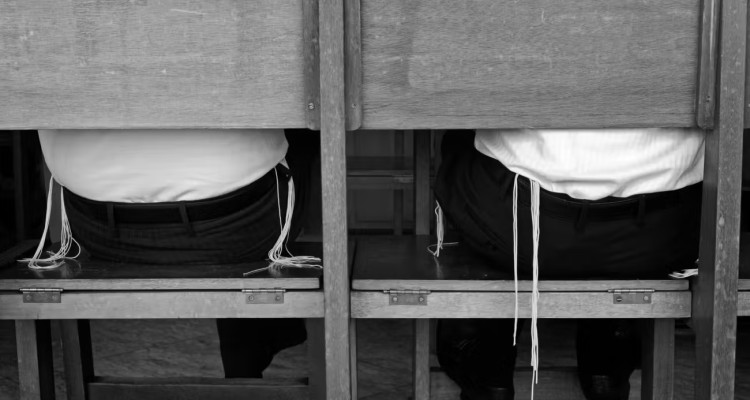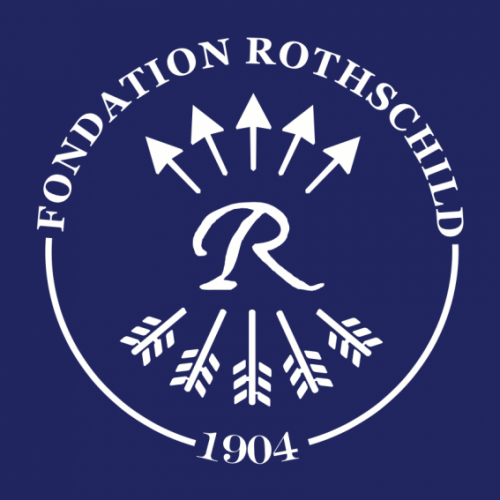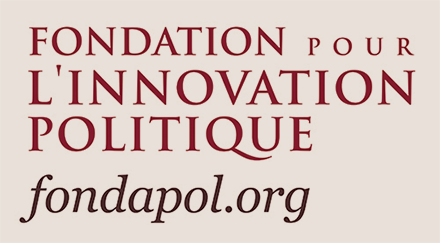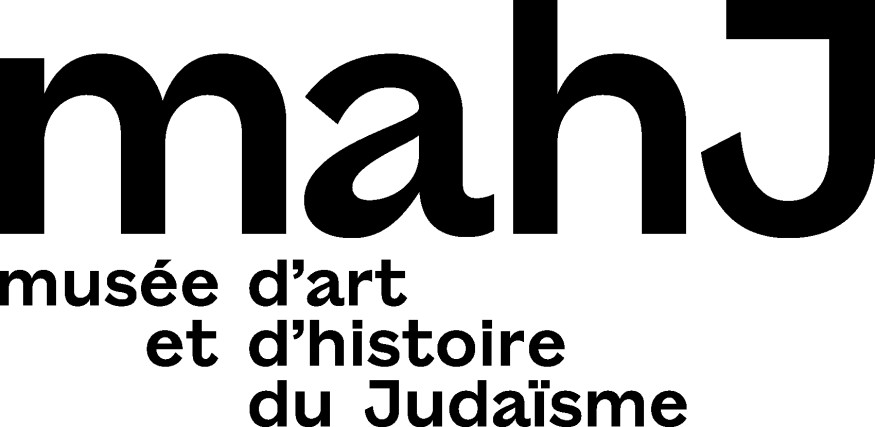How, in the space of a few months, two million Jews from Europe and Palestine settled in Vienna.
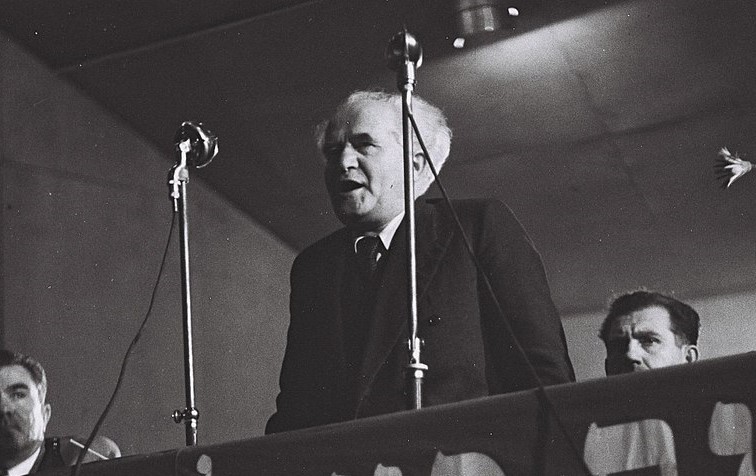
On May 11, 1945, two diplomats travel to Tel Aviv to meet David Ben Gurion, Chaim Weizmann, Nahum Goldmann, and the leaders of the World Jewish Congress. The first emissary represents President Truman, the second Comrade Stalin. The Great Powers deliberately left England out of the negotiations because of the dispute between the Jewish Congress and the Mandatory authorities. It’s unknown whether Truman and Stalin also agreed on this point, but both the USSR’s emissary, Yuri Lossowski, and the United States special delegate are Jewish. The latter is a young military intelligence sergeant, a newly naturalized American—Henry Kissinger. Born in Germany and emigrating to the United States, Kissinger conveniently interrupted his studies in accounting to join the army. Fighting in Europe, he quickly gained the confidence of his commanders, and General Eisenhower was quick to put his knowledge of German and his political flair to good use in denazifying the occupied zones. Among other qualities, Kissinger is unrivaled in his ability to distinguish the unyielding Hitlerian from the reasonable murderer, whose national-socialist convictions cannot withstand a good handful of dollars. As for Stalin’s representative, he’s an old apparatchik. Lossowski emigrated to Paris in 1905, where he soon became head of the casket makers’ section of the CGT, and even got to know Lenin and Trotsky. Returning to Russia in 1918, he became president of the Red International of Labor Unions. Having miraculously escaped all the purges, in 1941 Stalin entrusted him with the presidency of the USSR Jewish Anti-Fascist Committee. This position conferred a certain prestige on him among Jews in the United States and Europe. During the war, the Committee warned of the extermination of European Jews and was invited to the United States by American Jewish organizations anxious to raise funds to support the USSR’s war effort.
As part of his mission in Palestine, Lossowski forges links with the Joint Committee and leaders of the Zionist left. He tours kibbutzim and cooperative workshops. He also meets the leaders of Hashomer, Histadrut, Mapam and the Communist Party, and succeeds in getting the left to support the transfer project. Kissinger, for his part, engages the general Zionists and religious moderates with arguments that are as practical as they are effective, including the announcement of the immediate creation of a subsidiary of the Goldmann Sachs Bank in the new Jewish state and the identical reconstruction of the Tempelgasse synagogue, which went up in smoke during Kristallnacht. He does not, however, neglect the left-wing Zionists, despite their collectivism, which raises fears of communism. In the course of his meetings, he outlines a bold doctrine which, a quarter-century later, would enable him to change the face of the world by organizing the meeting between Mao Zedong and Richard Nixon. In fact, to isolate the Soviet Communists, Kissinger’s method already involves relying on other Communists, even if they appeared to be more rigorous on doctrine than the Russians. He visits the most radical kibbutzim, whose collectivism makes the kolkhozes look like bastions of bourgeois individualism. Lossowski for his part is greeted with suspicion and surprise. Many of the Russian-speaking kibbutznikim came from Ukraine and Crimea and, like their mentor Haïm Arlozorov, studied the agrarian communism of the anarchist prince Piotr Kropotkine. Some were members of the Jewish squadrons of Nestor Makhno’s insurrectionary army, and fear a Bolshevik trap similar to the one that allowed Trotsky to liquidate the anarchists. Some are even inclined to believe that the mysterious assassination of Haïm Arlozorov in 1933, on the beach in Tel-Aviv, could very well be the work of the NKVD. At that time, the Socialist Zionists are still exerting a certain influence on the Jews of the USSR, who had not yet been silenced by the Stalinist terror. For their part, Bund elders had not forgotten their comrades shot by the Bolsheviks during the Russian Civil War, nor the execution in February 1943 of Erlich and Alter, representatives of the Polish Bund, who had taken refuge in the USSR. So they have every reason to distrust the Soviet promise of a Jewish state in the heart of Europe.
Lossowski is copiously heckled at several stormy general assemblies held in Hashomer Hatzair kibbutzim.
Lieutenant Henry Kissinger is not displeased to learn that his counterpart has been heckled. He meets the kibbutznikim and swears that the United States will never interfere in the management of their collectivist enterprises. Pragmatically, he let them know that American legislation allows donations to humanitarian causes to be tax-exempt, and could be applied to kibbutzim nurseries, schools, and dispensaries once they have been transferred to Austria. In the final analysis, this tactic is far more effective than Lossowski’s hazy ideological arguments.
In Tel-Aviv, Lossowski receives a very cool welcome at Histadrut headquarters, due to his past as head of the Red International of Labor Unions which had constantly provoked splits within workers’ organizations. Kissinger, on the other hand, is all the more welcome because he carries a message from the AFL-CIO announcing the creation of a fund to support reformist unions in Europe. The fund, designed to prevent the Communist takeover of workers’ unions, would provide a substantial subsidy to the Histadrut, facilitating its establishment in Austria.
Initially reluctant, the Jewish Agency — in its capacity as the Yshuv’s executive governing body — eventually convenes a meeting at Tel Aviv City Hall and approves Truman and Stalin’s proposal by a majority vote. The 600,000 Jews living in the Jewish National Home lack everything. They live in fear of Arab attacks, and the British prevent European refugees from reaching the Promised Land. On the other hand, the perfidious Albion has no problem letting the survivors of the camps and ghettos settle on the banks of the Austrian Danube. Zionists cannot be insensitive to the plight of Jews wandering across Europe. Chaim Weizmann pleads for the unity of the people of Israel, which he considers even more important than the location of the future Jewish state. Ben-Gurion immediately dispatches a mission led by Abba Eban and Golda Meir. The young Major Haïm Bar Lev, a native of Vienna, is tasked with setting up a security apparatus to replace the Soviet and American forces maintaining order in the former imperial capital, as quickly as possible.
Rabbis were easily found to sweep away the objections of traditionalists attached to the ancestral land, with the help of Talmudic quotations. Max Brod takes on the task of convincing the Tel Aviv intellectuals gathered for the occasion in the Habima Theater. A return to Vienna, as in the days when he roamed the Graben in the company of Franz Kafka, his joyride companion, was beyond hope! Especially if the heads of the Jewish Agency agreed to make the reconstruction of the Burgtheater and the Opera a priority, in addition to the reopening of the cafés.
An impressive fleet of ships soon fills Haifa harbor, forming a veritable bridge to the Danube estuary. Strangely enough, this new exodus has all the majesty of the exit of Egypt, despite the fact that the people of Israel are leaving the land of Canaan for good. But the hectares of good Austrian land seem more promising than the desert stretches, and the general assemblies of the kibbutzim have come out in favor of the transfer. This time, no one would dare challenge the legitimacy of Jewish collective farms in the countryside, where large landowners and small farmers alike had joined the Nazis en masse.
In addition, the USA open an unlimited credit line for the reconstruction of the country and the accommodation of survivors. Stalin, for his part, undertakes to facilitate the movement of Jews to Austria, particularly those who had been subjects of the Austro-Hungarian Empire, i.e., Jews from Galicia, Hungary, and Czechoslovakia.
The exodus of Austrians to Bavaria, Tyrol, and Carinthia stirs little emotion. The brutality of the expulsions in the Soviet-occupied zone is barely mentioned. But the Red Cross put considerable energy into regions where it had long been conspicuous by its inertia, and within a few months, refugee camps spring up in Tyrol and Carinthia, where sanitary conditions seem satisfactory. The announcement of the creation of the Autonomous Front of the Austrian Tyrol (AFAT) in Innsbruck arouses the disapproval of the entire Western press. The leaders of this organization — which pledges to reconquer the territory occupied by the Zionist entity — are obviously former Nazis, despite their denials. One of the AFAT’s leaders, Kurt Waldheim, has just left the Waffen SS officer’s uniform in which he carried out massacres in Yugoslavia. Captured by the partisans, he is freed on Tito’s orders. In exchange, Waldheim sets up a paramilitary organization, based in Klagenfurt, and helps his former enemy conquer Carinthia.
In the United States, President Truman is soon faced with a violent antisemitic campaign. The movement toward the Jewish state of Austria threatens to provoke a drain of talent and capital. The fact is, the Rothschilds didn’t wait long to reclaim their former Vienna offices, followed by a number of Wall Street financial institutions. American universities and scientific research centers are emptying out, along with major Hollywood studios, New York and Boston philharmonic orchestras, Broadway theaters, and Lower East Side Delicatessens. The distinguished senator from Wisconsin — a fierce critic of the Reds and, incidentally, an alcoholic and morphine addict — obtains the creation of a commission to investigate Dr. Oppenheimer’s links with the new state. According to McCarthy, since the influence of Communist ideas is predominant in the Jewish state, allowing American Jewish scientists to settle there is tantamount to handing Stalin the atomic bomb on a platter. In Washington, the Anti-Defamation League (ADL) complains to Truman about McCarthy’s outrageous remarks on the subject: “Those Rouski bastards have already stolen enough Nazi scientists from us! We’re not going to let them have the kikes as a bonus!”
Stalin, however, objects the presence of atomic scientists in the Judenstaat. In any case, Oppenheimer makes clear that he has no plans to settle in Vienna as he sees himself as a citizen of the United States. This view satisfies both Washington and Moscow.
However, the U.S. Congress adopts a law restricting Jewish emigration to Europe.
In the space of a few months, two million Jews from Europe and Palestine settle in Vienna.
Of course, numerous incidents occur in Palestine, where the Irgun tries to oppose the transfer by sabotaging a ship in Haifa, assassinating the United Nations Commissioner, and blowing up the King David Hotel in Jerusalem. The re-embarkation of the 600,000 Yshuv members even trigger fierce fighting between the Irgun and the Haganah. The Palmach, the Haganah’s shock unit, is forced to open fire several times on the port of Haifa. Off the coast of Tel Aviv, Irgun fighters prepare to disembark from the Altalena to prevent the evacuation of the city. The Palmach is quick to sink the Panamanian-flagged ship, while the Haganah oversees the departure of the Jewish population.
After the sinking of the Altalena, Zionist Socialist leaders initially propose a ceasefire to the disciples of the late Zeev Jabotinsky. They then undertake to change their mind with the help of the Allied services. Itzhak Shamir, expelled from Palestine by the British and now languishing in Madagascar, is asked to head a commando unit charged with terrorizing Austrian peasants attempting to resist the expulsions. As Madagascar is French territory, Shamir’s exfiltration is quickly organized with the complicity of Jules Moch, Minister of the Interior, but also co-religionist and former classmate of Captain Dreyfus. The British go so far as to free the members of the Stern Group held in the fortress of Saint-Jean d’Acre. Shamir is parachuted onto Linz by a French plane, and his men join him aboard a U.S. Air Force Dakota. The commando recovers a stockpile of weapons and explosives abandoned by the Wehrmacht and strangely “forgotten” by the Red Army, then proceed immediately to clear the few villages spared by the Soviets.
Ari reminds him that his progenitor was more attached to the national affirmation of the Jewish people than to the location of their state. In the end, Rabbi Wiener manages to convince Begin that the return to Zion could not be a human endeavor and that the Jewish people would be in grave peril should they persist on this unholy path. On the other hand, in anticipation of the messianic era, the Torah in no way forbids the Jews from regrouping in another land.
The Irgun commander agrees to negotiate with David Ben Gurion, who grants him major concessions. In particular, the socialist leader agrees to name an avenue in Vienna after Zeev Jabotinsky. He also offers to Begin a seat in the government, which the leader of the Revisionist Zionists turns down, preferring to found a legal opposition party-the Herut [Liberty]. The American intelligence services arrange for organization funds to be transferred to an account opened in the name of this political formation with the Vienna branch of Goldmann-Sachs. Begin then embarks for Haifa with a hundred of his supporters and their families. Ben Gurion allocates him a mansion in the former aristocratic quarter near Schönbrunn, miraculously spared from the wartime bombardments.
Will the Jews of the Yshuv manage to leave the Promised Land before the fateful date of May 14, 1948? What will be the fate of the Jews who remain in Arab lands? Will Stalin respect the agreement calling for the departure of the Red Army?
Find out in our next episode!
Guy Konopnicki
Guy Konopnicki is a journalist and writer. Among his numerous books, one may quote the one he wrote with Brice Couturier, “Réflexions sur la question goy” [Reflections on the Gentile Question] (Lieu Commun Ed., 1988) and “La faute des Juifs – Réponse à ceux qui nous écrivent tant” [The Jews’ Fault—Reply to those who write to us so much] (Balland Ed., 2002).
